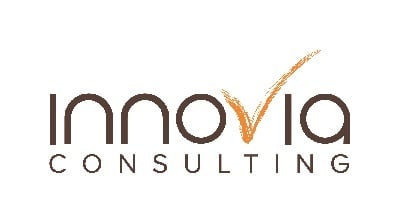Today, we continue exploring common objections to moving to the Azure Cloud and how they might be re-thought. In the last blog, we examined if you lose control of your data or have less security with the Cloud. To see why you don’t, be sure to read that piece.
Now let’s take a look at two more objections related to your current technology stack. At Innovia, we commonly hear that customers don’t want to move to Azure because of their significant investment into their network or the fact that the technology they are using doesn’t function in the Cloud.
Correcting the Sunk Cost Fallacy
If you are like many companies with on-premises systems, you have developed an extensive network to support them. This investment includes servers, networking hardware, and of course, network personnel to manage it.

That’s a considerable amount spent, so it’s easy to see why you might not want to let it go. After all, you want to see a return on this investment. The problem comes when you decide that you could perform better in the future by switching to the Cloud. How do you weigh your previous investments vs. these future gains?
The truth, though, is past investments should not impact future decisions. Doing otherwise clouds your judgment on what is the best path forward. After all, you can’t change the past, but if you make the right decision for the future, you’ll thank yourself then!
But many businesses still hold on to outdated assets because they spent so much in the past. The overcorrection people make is so significant that business strategies refer to it as a logical error known as the Sunk Cost Fallacy. When you make decisions based on sunk cost, you may not be making the optimal decision for your future.
To overcome the sunk cost fallacy in the Cloud migration conversation requires setting aside all the investment you’ve made in the past and focusing on the best way to go for the future. We find that most companies can see significant savings over the long term with Azure.
What If Your Software Can’t Move to the Cloud?
We know that many businesses rely on software that hasn’t been updated recently. In many cases, this essential software can be a barrier to the discussion on moving to the Cloud. Usually, the objection to moving to Azure is that this software is too old for the Cloud.
There are a few things worth considering here:
- First, it’s possible your software could be updated. If your software vendor is still in business, they likely have a new version that supports the Cloud. Fixing the problem could simply be updating to the latest version of the software you already use.
- Second, if your software can’t be updated, other parts of your business can take advantage of Cloud technology. Microsoft 365, for example, can help your team get started with a digital transformation on email, productivity, and collaboration (with Microsoft Teams). These Cloud technologies can likely work in tandem with your older software while giving you significant new features.
- Lastly, if all else fails, there still may be a way. Innovia Consulting has successfully moved software to Azure that is over ten years old.
Ready to Get Back to Your Business?
Are your servers and on-premises software forcing you to spend a large chunk of your budget and time? Azure allows your IT team to get back to innovating new solutions for your business and customers.
Want to learn more? Read our free eBook Have Your Servers Got You Stuck in the IT Business. You’ll learn how:
- You enable your team for the best future (rather than trying to make up for the past).
- You bring the software you need to a modern Cloud environment.
- And much more!

One more blog is coming soon, so be sure to subscribe and come back to learn the final Cloud objections and our answers to them.






